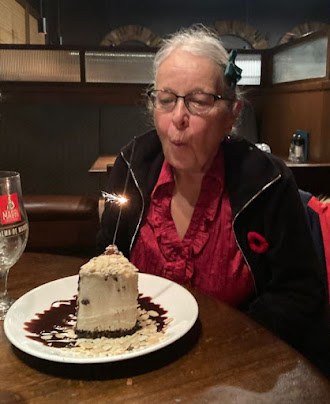#12 MR. PRIME MINISTER
LESTER PEARSON: 50 YEARS LATER
Many books and
countless articles have been written about the life, times and legacy of Lester Pearson, Canada's 14th Prime Minister. I think this
article by Andrew Cohen is an excellent summary of his legacy.
Lester B. Pearson, 50 years Later.
Fifty years after his death, Lester Bowles Pearson is known
only vaguely to Canadians. They see his
name on an airport, an international college and public schools, or hear it
attached to a prize, trophy or organization.
But in our unconscious country, how many recognize—let alone remember—our greatest diplomat in the middle decades of the 20th century, considered the best-known Canadian of his day? Who was awarded the Nobel Peace Prize for having “saved the world” during the Suez Crisis of 1956?
Do they know he led the Liberal party to its worst defeat in 1958—and then, with steely resolve, retrenched, rebuilt and returned it to power in 1963, his greatest unsung political achievement?
Or most importantly, do they know him as Canada’s 14th prime minister for five busy, consequential years? A generation ago, he and his circle of reformers created the pillars of modern Canada: official bilingualism, medicare, old age pensions, student loans, more open immigration. He embraced flexible federalism and introduced the Order of Canada and a contentious new flag, the Maple Leaf. Denied a majority in four elections, he did all this leading a minority government, the most productive in our history.
“I have been fortunate, in all my lives”, he wrote. “I’ve
had as many as a cat.” On Dec 27, 1972, those lives ran out. But, oh, what a
feverish passage of 75 years, beginning in a parsonage in starched, lily-white
Ontario, in Victorian Canada and taking him into the creases in the map of the
world.
He was a sausage-stuffer in Chicago and a stretcher-bearer
in Europe during the First World War. He studied at Oxford and the University
of Toronto, where he taught history. He played semi-professional hockey and
baseball.
He was a diplomat at Canada House in London, ambassador to
Washington and undersecretary of state for External Affairs in Ottawa. He was
the architect of NATO and shaped the new agencies of the United Nations, where
he was later president of the General Assembly. Twice he came within a Soviet
veto of becoming secretary-general.
Pearson was self-effacing, droll and modest, more
comfortable with the compromises of diplomacy than the warfare of politics.
He’d hate today’s partisanship. He hoped
to be judged on his “record, not a recording".; he wasn’t made for television,
let alone Twitter or Tik-Tok. What would he think of Canada today?
No doubt he would applaud our prosperous and sophisticated
country, which over the last half century has welcomed millions, expanded
social welfare, built a modern economy and created a diverse, tolerant state.
Pearson would also be delighted to see a less colonial
country; much as he loved Britain, he would cheer the patriation of the British
North America Act with the Canadian Charter of Rights and Freedoms. In the
debate over Canada and the Crown, he would be more a republican than a
monarchist. At root, he was a nationalist—more civic than economic—who had
vision, ambition and most of all confidence in Canadians to be a mature,
independent people.
But Pearson would lament Canada’s decline in the world. His
generation championed liberal internationalism. He would mourn our weak
military, our stingy development assistance (significantly, he chaired a
commission in 1969 that asked wealthy nations to spend 0.7 per cent of their
gross domestic income every year on foreign aid, which Canada never has) and
most of all our tepid diplomacy.
Yes, he’d be delighted to see the imaginative Bob Rae as
Canada’s ambassador to the United Nations, a seat his father (and Pearson’s
colleague) Saul Rae once held. But Pearson would be dismayed that Canada has
been twice denied membership on the Security Council this century and that we
have abandoned peacekeeping. Canada has become the world’s gentle giant of
gesture.
Pearson’s government was singularly transformative and
surprisingly experimental. In its laws, practices and institutions, today’s
Canada is Pearson’s Canada—pragmatic, progressive, moderate and still
unfinished.
--Andrew Cohen, “Lester B. Pearson, 50 years Later”
Toronto Star. Dec 30, 2022. p. 15.
Andrew Cohen is a journalist, a professor at Carleton
University and author of Extraordinary Canadians: Lester B.Pearson
Lester Bowles Pearson
b. April 23, 1897 in Newtonbrook, Toronto
m. Marion-Elspeth Moody on Aug 22 1925 in Winnipeg,
Manitoba
Prime Minister of Canada 1963-1968
d. December 27, 1972 in Ottawa
Homuth line…nephew of husband of my first cousin 2x
removed
(Pearson’s maternal uncle, Thomas Edgar Bowles, married
my cousin Rose Homuth)








Comments
Post a Comment